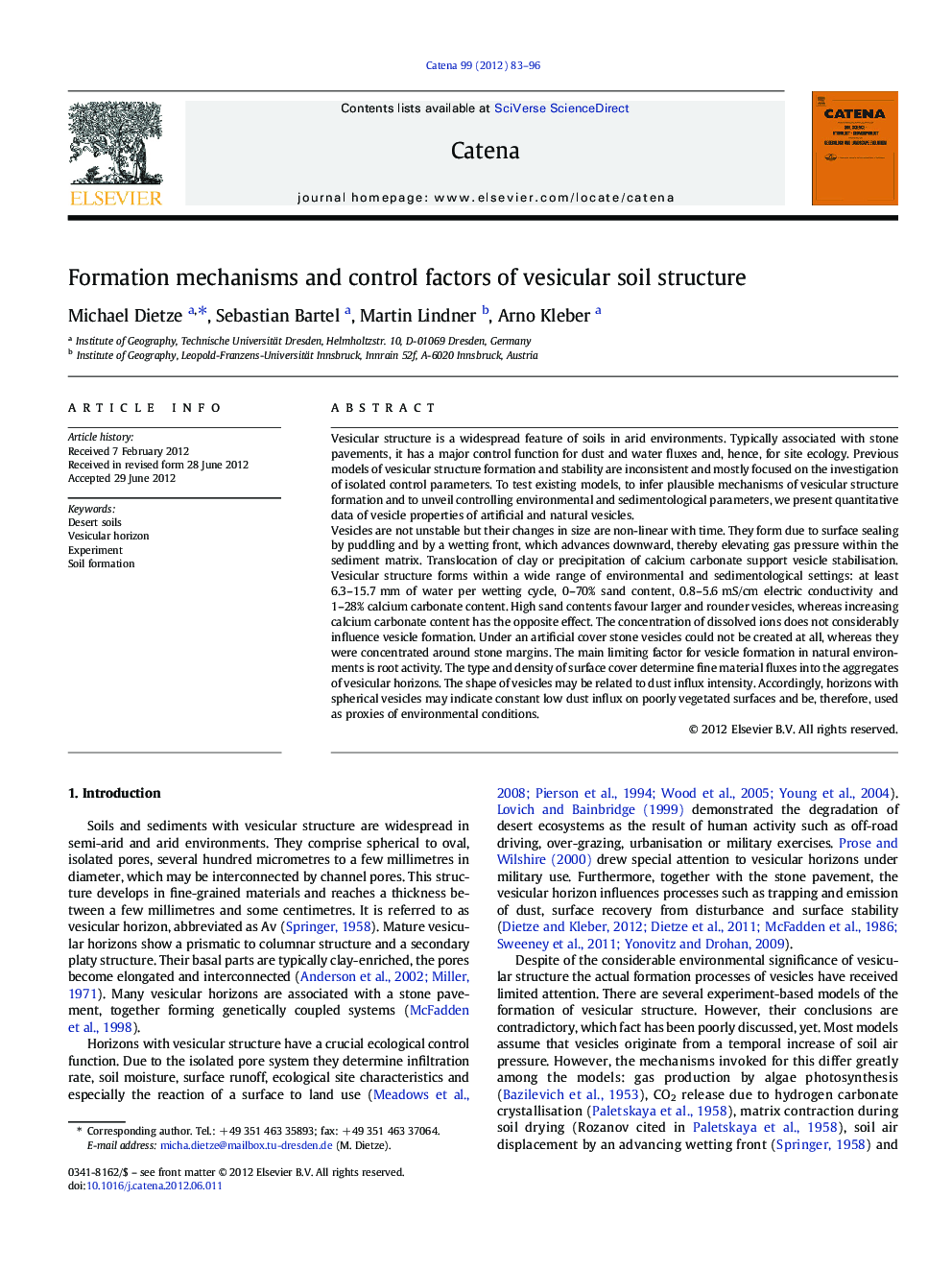| Article ID | Journal | Published Year | Pages | File Type |
|---|---|---|---|---|
| 4571809 | CATENA | 2012 | 14 Pages |
Vesicular structure is a widespread feature of soils in arid environments. Typically associated with stone pavements, it has a major control function for dust and water fluxes and, hence, for site ecology. Previous models of vesicular structure formation and stability are inconsistent and mostly focused on the investigation of isolated control parameters. To test existing models, to infer plausible mechanisms of vesicular structure formation and to unveil controlling environmental and sedimentological parameters, we present quantitative data of vesicle properties of artificial and natural vesicles.Vesicles are not unstable but their changes in size are non-linear with time. They form due to surface sealing by puddling and by a wetting front, which advances downward, thereby elevating gas pressure within the sediment matrix. Translocation of clay or precipitation of calcium carbonate support vesicle stabilisation. Vesicular structure forms within a wide range of environmental and sedimentological settings: at least 6.3–15.7 mm of water per wetting cycle, 0–70% sand content, 0.8–5.6 mS/cm electric conductivity and 1–28% calcium carbonate content. High sand contents favour larger and rounder vesicles, whereas increasing calcium carbonate content has the opposite effect. The concentration of dissolved ions does not considerably influence vesicle formation. Under an artificial cover stone vesicles could not be created at all, whereas they were concentrated around stone margins. The main limiting factor for vesicle formation in natural environments is root activity. The type and density of surface cover determine fine material fluxes into the aggregates of vesicular horizons. The shape of vesicles may be related to dust influx intensity. Accordingly, horizons with spherical vesicles may indicate constant low dust influx on poorly vegetated surfaces and be, therefore, used as proxies of environmental conditions.
► Experiment-based vesicle formation models are evaluated. ► Natural and artificial vesicular structures are described quantitatively. ► Control of physical, chemical and environmental parameters on vesicles is inferred. ► Vesicle formation is only limited by root activity. ► Surface cover type and dust flux control aggregate texture and vesicle shape, respectively.
